Red Elephants of Tsavo: Why They’re Unique & Where to See Them
The Red Elephants of Tsavo – A Natural Wonder
Kenya’s Tsavo National Park is home to one of Africa’s most unique wildlife spectacles—the red elephants of Tsavo. Unlike other elephants, these majestic creatures appear reddish-brown, making them stand out in the African savannah.
But what makes them red? Are they a different species? And where can you see them on safari? Let’s dive into everything you need to know about Tsavo’s red elephants.
🔹 Location: Tsavo East & Tsavo West National Parks, Kenya
🔹 Best Time to See Them: June – October (dry season)
🔹 Why They’re Red: Coating themselves in Tsavo’s red volcanic soil
🔹 Best Places to See Them: Aruba Dam, Galana River, Mudanda Rock

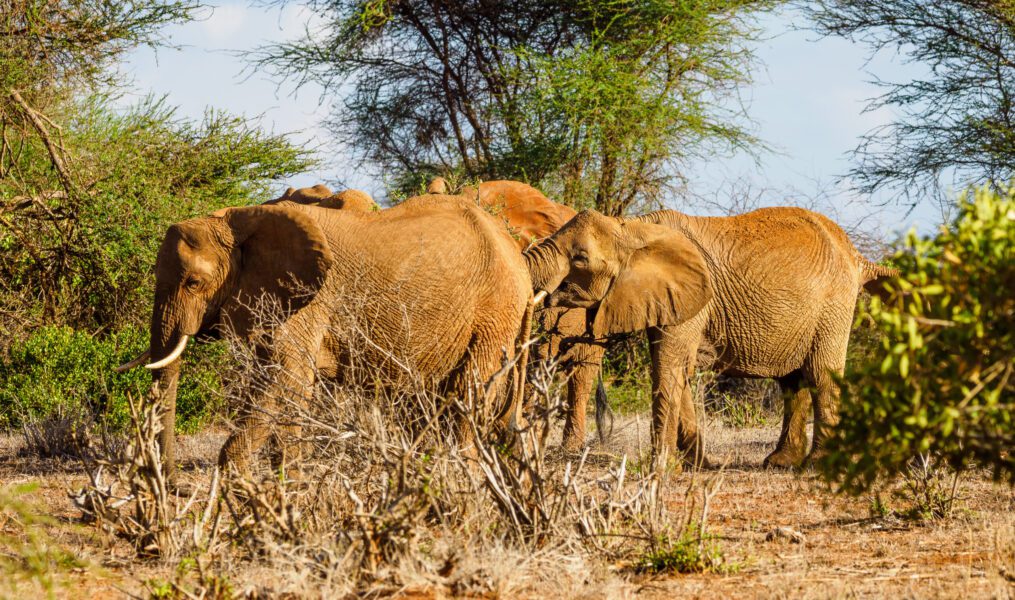
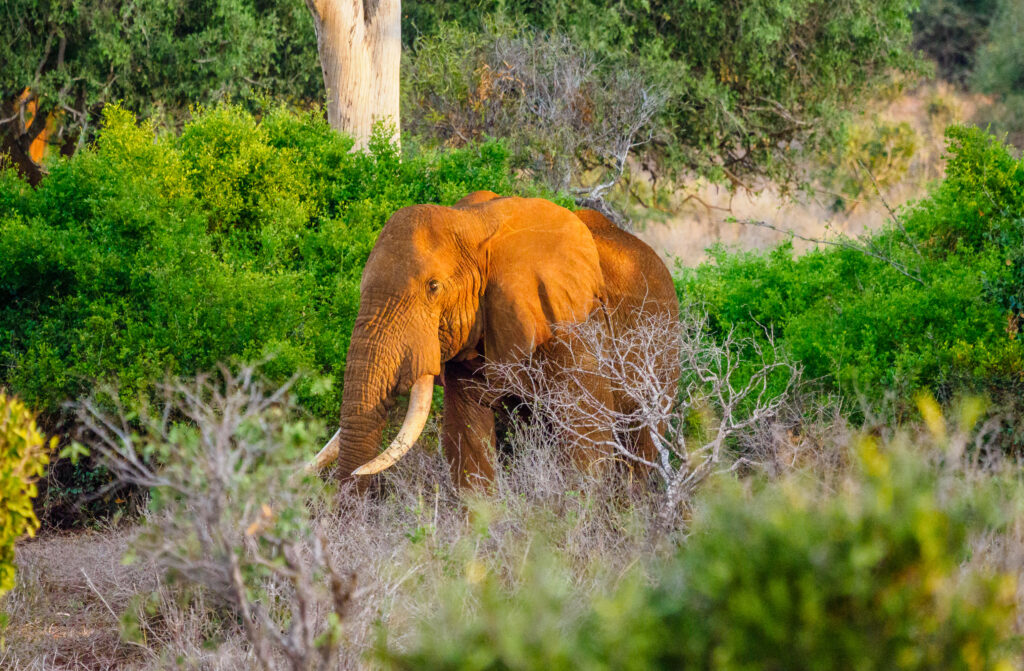
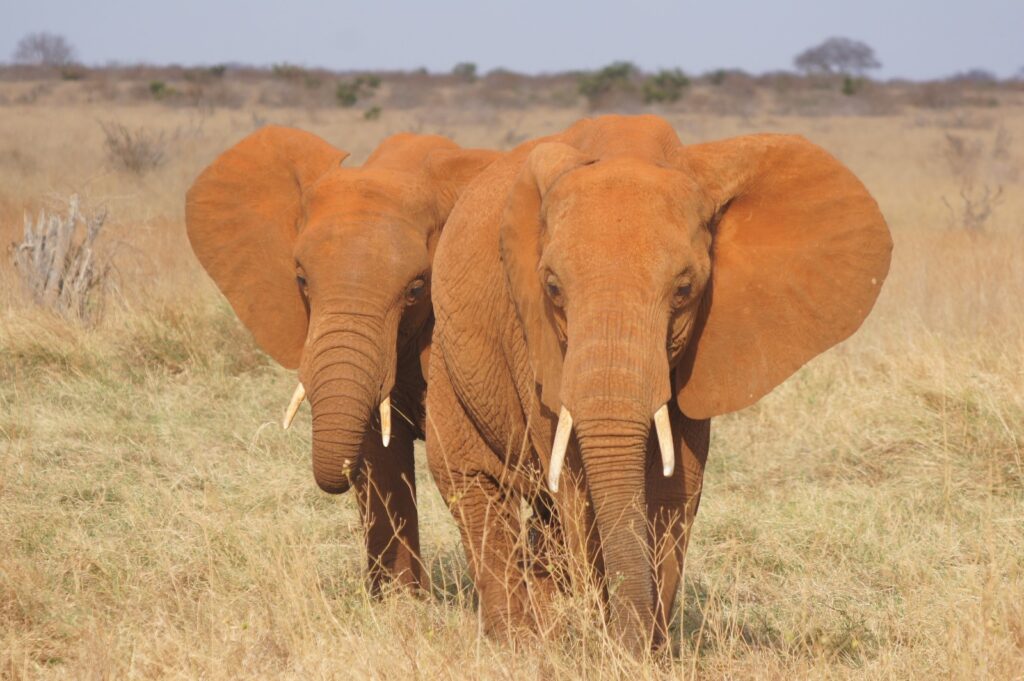
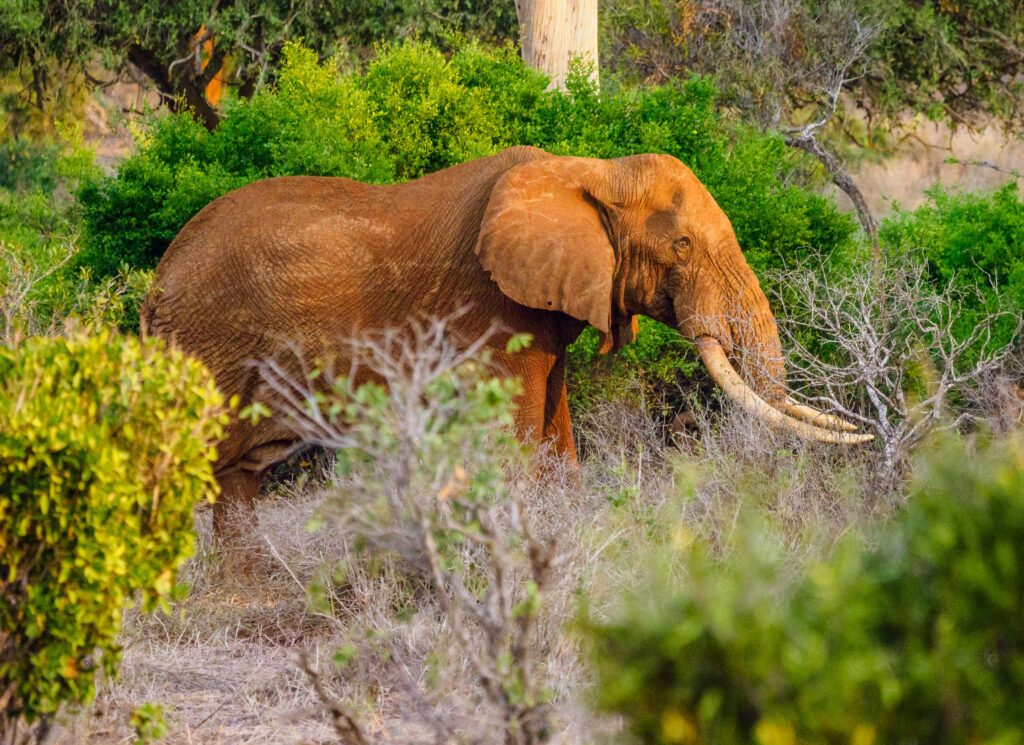
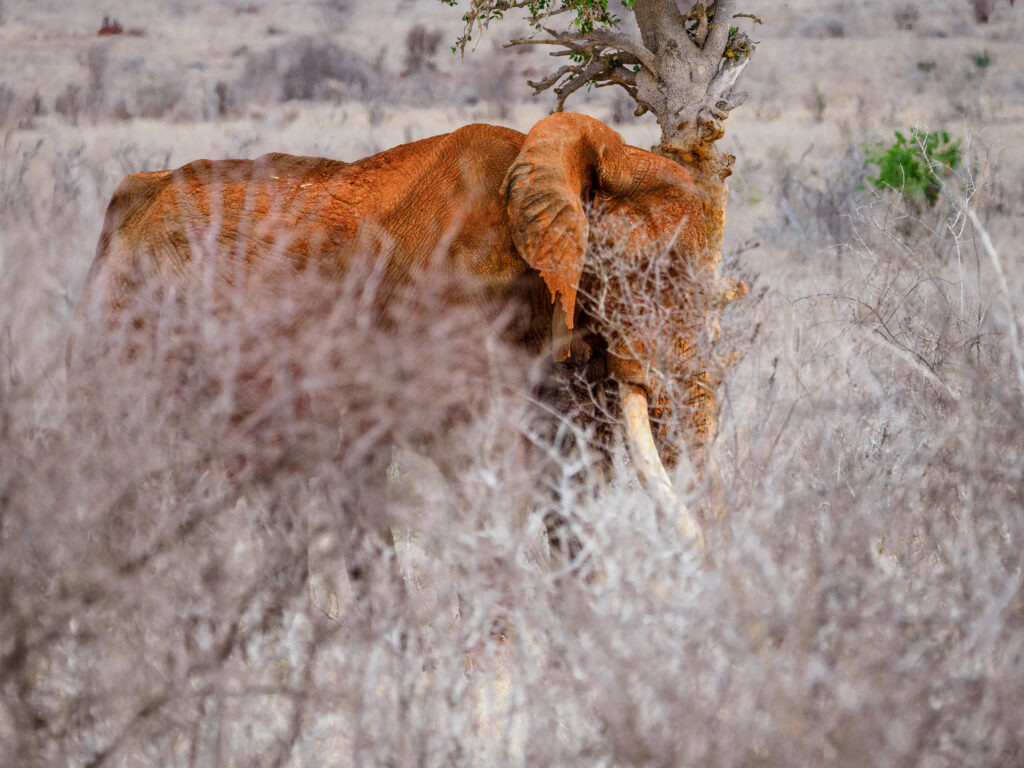
Why Are Tsavo’s Elephants Red?
Contrary to popular belief, Tsavo elephants are not genetically red—they’re just like any other African elephant. Their distinctive color comes from their habit of rolling in Tsavo’s red volcanic soil, which serves multiple purposes:
✔ Protection from the Sun – The thick dust layer acts as natural sunscreen, shielding their skin from harsh sunlight.
✔ Cooling Effect – The dust helps elephants stay cool in the heat.
✔ Insect Repellent – The red soil acts as a natural defense against flies and parasites.
💡 Fun Fact: The elephants reapply this natural “sunscreen” daily, which is why they maintain their striking red appearance!
Where to See Red Elephants in Kenya
The best place to see red elephants is in Tsavo National Park, which is divided into two sections:
Tsavo East National Park (Best for Elephant Sightings)
Tsavo East is the top destination for seeing red elephants in large numbers. The park’s vast open landscapes allow for incredible sightings, especially around water sources.
✔ Best Spots in Tsavo East:
🔹 Aruba Dam – Elephants gather here to drink and bathe.
🔹 Galana River – Spot herds cooling off near the water.
🔹 Mudanda Rock – A prime location for watching elephants from above.
Tsavo West National Park (Scenic & Wildlife-Diverse)
While Tsavo West has fewer elephants than Tsavo East, it offers lush landscapes and scenic views.
✔ Best Spots in Tsavo West:
🔹 Mzima Springs – A freshwater oasis where elephants drink.
🔹 Ngulia Rhino Sanctuary – See elephants alongside rare black rhinos.
🔹 Poacher’s Lookout – A panoramic viewpoint for spotting wildlife.
💡 Tip: If you want to see massive elephant herds, Tsavo East is the better option!
Tsavo East vs. Tsavo West: Which Park is Better?
Both sections of Tsavo National Park offer unique safari experiences, but which one should you visit?
| Feature | Tsavo East 🏜 | Tsavo West 🌿 |
|---|---|---|
| Red Elephants | Best sightings | Present, but fewer |
| Scenery | Vast savannah, open plains | Lush hills, volcanic landscapes |
| Wildlife | Large elephant herds, lions, giraffes | Rhinos, hippos, diverse birdlife |
| Best Attractions | Aruba Dam, Galana River, Mudanda Rock | Mzima Springs, Ngulia Rhino Sanctuary |
| Safari Experience | Easier game viewing | More scenic, varied terrain |
| Best For | Elephant lovers, classic safaris | Photographers, diverse landscapes |
Verdict: If seeing red elephants is your priority, Tsavo East is the best choice!
Best Time to Visit Tsavo for a Safari
While Tsavo is a year-round safari destination, the best time to see red elephants is during the dry season when animals gather around water sources.
✔ June – October (Dry Season) – Best for elephant sightings, easy game viewing
✔ December – March – Great for photography, birdwatching, and green landscapes
✔ April – May (Rainy Season) – Fewer tourists, but some roads can be muddy
Tip: Book your safari during the dry months for the best wildlife sightings!
How to Get to Tsavo National Park
By Road (Most Popular Option)
From Nairobi: 5-6 hours (via Mombasa Road)
From Mombasa: 3-4 hours (perfect for beach-to-bush safaris)
By Air (Fastest Option)
Flights from Nairobi’s Wilson Airport to Tsavo airstrips take about 1 hour.
💡 Recommended Airstrips: Voi, Sala, Kilaguni
Need help with transport? We offer private safari, transfers & flight bookings!
Book a Tsavo Safari to See the Red Elephants
If you’re looking for the best Tsavo safari experience, check out our top Tsavo East safari packages:
3-Day Tsavo East Safari
✔ Spot red elephants at Aruba Dam & Galana River
✔ Stay at a luxury lodge or budget-friendly camp
✔ Enjoy thrilling morning & evening game drives
4-Day Tsavo East & West Safari
✔ Experience both parks for diverse wildlife sightings
✔ Visit Mzima Springs, Mudanda Rock & Ngulia Rhino Sanctuary
✔ Stay in comfortable lodges with stunning views
7-Day Tsavo & Amboseli Safari
✔ Explore Tsavo’s red elephants & Amboseli’s large herds
✔ Get breathtaking views of Mount Kilimanjaro
✔ Stay in top-rated safari lodges for an unforgettable adventure
🔹 View More Tsavo Safari Packages
One day tsavo East from Diani and back
Plan Your Red Elephant Safari Today!
Ready to witness the red elephants of Tsavo up close? Let us help you plan your dream safari!
Get a Free Quote | WhatsApp Us
Follow us on: Facebook | Instagram | TripAdvisor
FAQs :Red Elephant Safari
1. Why are elephants in Tsavo East red?
Elephants in Tsavo East appear red due to their habit of rolling in the park’s red volcanic soil, which coats their skin and gives them a unique hue.
2. Where is the best place to see red elephants in Tsavo East?
Mudanda Rock and Aruba Dam are popular spots where elephants gather, especially during the dry season.
3. What is the best time to visit Tsavo East National Park?
The dry season (June to October) is ideal for spotting elephants near waterholes, while the wet season (November to May) offers lush landscapes and fewer crowds.
4. How many elephants live in Tsavo East National Park?
Tsavo East is home to over 12,000 elephants, making it one of Africa’s largest elephant populations.
5. What makes Tsavo East unique compared to other parks in Kenya?
The park’s volcanic landscapes, iconic red elephants, and abundant wildlife create a one-of-a-kind safari experience.
6. How can I support elephant conservation in Tsavo?
You can support conservation by visiting the park, donating to wildlife organizations, and promoting eco-tourism initiatives in the region.

